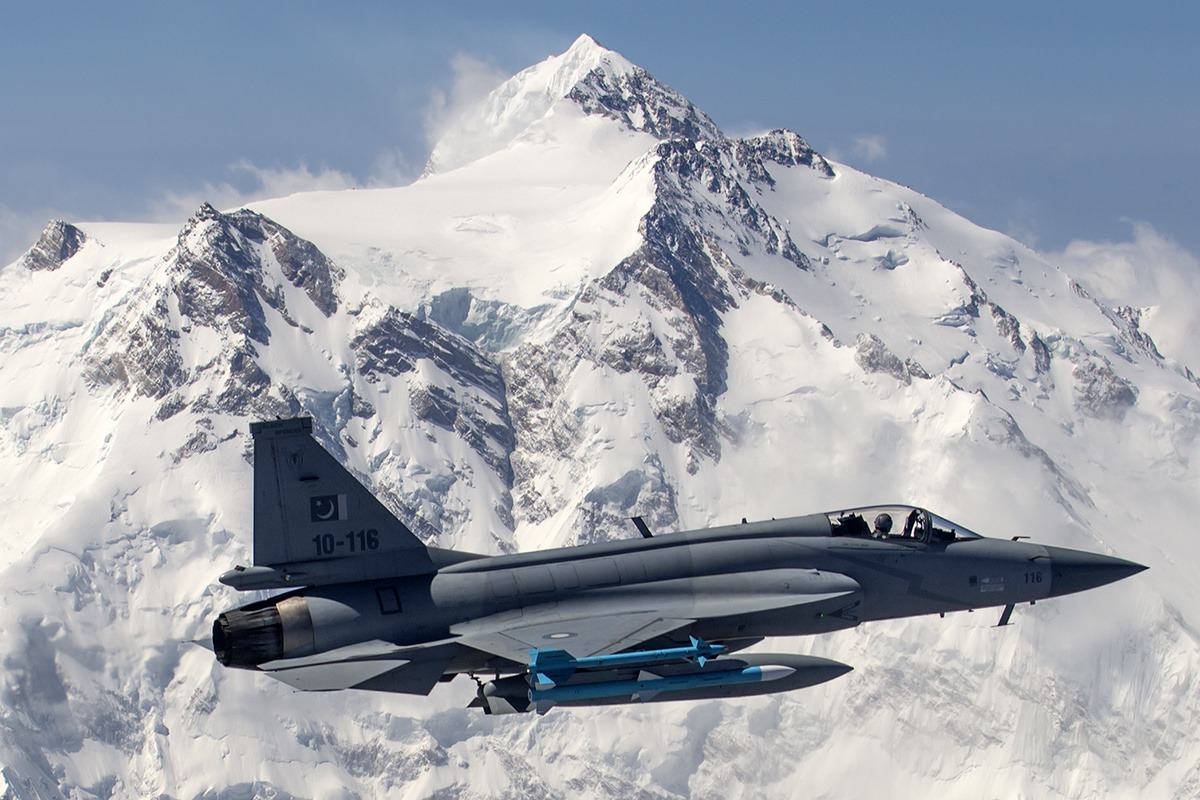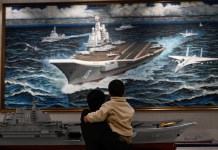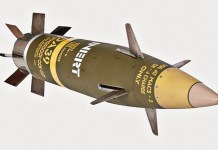As India inducted the French-built Rafale fighters capable of carrying nuclear-armed missiles, the Pakistan Air Force has also been upgrading its JF-17 ‘Thunder’ for nuclear missions.
Thunder Or Blunder? Pakistan’s “Cutting Edge” Fighter Meets 5th Crash In 13 Years; IAF Experts Review JF-17 Aircraft
Pakistan has consistently maintained ambiguity when it comes to its nuclear weapons program.
The JF-17 fighter jet, jointly developed by China and Pakistan, has long been rumored to have been assigned a nuclear mission. A recently released photograph confirms that the fighter jets manufactured in Pakistan have indeed been armed with tactical nuclear missiles.
The news comes against the backdrop of the Stockholm International Peace Research Institute (SIPRI) 2024 Yearbook, confirming that for the first time, India surpassed Pakistan in terms of nuclear warheads.
As of January 2024, India has a total inventory of 172 nuclear warheads, an increase from 164 in 2023. India’s nuclear weapons are believed to be plutonium-based, produced at the Bhabha Atomic Research Centre (BARC). Pakistan maintains 170 nuclear warheads as of 2024, using highly enriched uranium (HEU) designs.
An American think tank, the Federation of American Scientists (FAS) analyzed photographs captured in 2023 to find that the RAAD I, Pakistan’s only nuclear-capable Air-Launched Cruise Missile (ALCM), has been integrated with JF-17.
The role of air deterrence has so far been played by the Mirage III/Vs. The RAAD ALCM was first tested in 2007 and can be deployed for both “conventional or nuclear” roles.
Pakistan plans to retire its aging Mirage III and V aircraft, and JF-17 will take over its air-nuclear deterrence role. The first image of a JF-17 supporting the nuclear configuration was revealed in the 2023 Pakistan Day Parade rehearsals. FAS purchased the original image to ascertain if the RAAD deployed on the JF-17 image is indeed nuclear-capable.
The ALCM image was compared to the other images of RAAD I and II displayed over the years. The analysis suggested that there have been design differences between the RAAD deployed on the JF-17 and the two variants of the ALCM.
“From these observations, it is likely that Pakistan has made significant progress toward equipping its JF-17s with the capability to eventually supplement–and possibly replace–the nuclear strike role of the aging Mirage III/Vs,” the FAS’ analysis read.
“It is evident that Pakistan has redesigned the RAAD-II ALCM, but little information has been confirmed about the purpose or capabilities associated with this new design. It is also unclear whether either of the Raad systems has been deployed, but this may only be a question of when rather than if,” the analysis adds.
The JF-17 ‘Thunder’ is not only the mainstay of the Pakistan Air Force (PAF) but also the country’s flagship defense export product.
The JF-17 Thunder combat aircraft was jointly developed by the Pakistan Aeronautical Complex and China’s Chengdu Aircraft Industry Corp. After its first flight in 2003, JF-17 airframes were initially produced solely in China. Presently, Pakistan manufactures 58 percent of the aircraft, with the remaining 42 percent produced in China.
The JF-17 Thunder is a single-engine, lightweight, multi-role combat aircraft with Chinese airframe and Western avionics powered by a Russian engine. PAC Kamra has delivered nearly 120 JF-17 Block I and II fighter jets to the PAF since 2009.
The two arch-nemesis have been engaged in a nuclear arms race in the region. After India successfully tested Multiple independently targetable reentry vehicles (MIRV), Pakistan is also pursuing the technology with the Ababeel land-based missile.
India has tested the MIRV technology for its Angi-P and Agni-5 missiles. China has already deployed MIRVs on several of its DF-5B Intercontinental Ballistic Missiles (ICBMs) and Dong Feng DF-41.
Pakistan’s nuclear deterrence is focused on India, hence its emphasis on tactical nuclear weapons. India’s existing nuclear missile covers the entire landmass of Pakistan, and there has been a greater focus on longer-range weapons to bring all of China within the ambit of its nuclear weapons.
Till now, during peacetime, it was understood that India had stored its nuclear warheads separately from its launchers. However, the cannisterization of nuclear missiles and deployment of nuclear submarines suggest a shift in India’s policy towards mating its warheads with their launchers during peacetime.

Pakistan’s Tactical Nuclear Weapons
Pakistan began developing nuclear weapons after India detonated its first nuclear bomb in 1974. In 1998, Pakistan, in response to India’s second nuclear test, detonated five devices in a single day and a sixth one two days later.
To tackle growing Indian threats of punitive cross-border strikes, Pakistan focussed on developing tactical nuclear weapons. Tactical nuclear weapons or non-strategic nuclear weapons that have a low yield.
These weapons, unlike large nuclear weapons that may be used for hitting large strategic or civilian targets, are designed to annihilate critical military targets of the enemy.
India’s Air-Launched Nuclear Deterrence
Fighter bombers were India’s first and only nuclear strike force until 2003 when the country deployed its first nuclear-capable ballistic missile. Despite developing land and sea-based nuclear deterrence, aircraft-delivered nuclear weapons are important to India’s nuclear posture.
It is speculated that three or four squadrons of Mirage 2000H and Jaguar IS/IB aircraft have been assigned nuclear strike missions against Pakistan and China.
The Mirage 2000 H fighter bombers are deployed at Gwalior, Madhya Pradesh. Mirage-2000 is a French-made fighter jet. France used its Mirages in a nuclear strike role for three decades until its retirement in 2018. The Indian Mirage 2000 H has undergone upgrades to extend its service life.
The IAF also operates five squadrons of the Jaguar (named Shamsher or Sword of Justice). The Jaguar, jointly designed by France and Britain, was nuclear capable when deployed by these countries. It got a Darin III precision-attack and avionics upgrade in 2016.
Observers of Indian nuclear forces have estimated that aircraft with both conventional and nuclear missions conduct operations from the Nal (Bikaner) Air Force Station and the Ambala and Gorakhpur Air Force bases. Satellites, too, are likely to serve both a civil and military role.
However, these two aircraft are getting old. India’s latest acquisition is the 36 Dassault Rafale aircraft from France. The Rafale is also used in nuclear mission roles in the French Air Force, and there have been speculations that the aircraft might be converted to a nuclear role in India as well.
- Ritu Sharma has been a journalist for over a decade, writing on defense, foreign affairs, and nuclear technology.
- The author can be reached at ritu.sharma (at) mail.com
- Follow EurAsian Times on Google News




